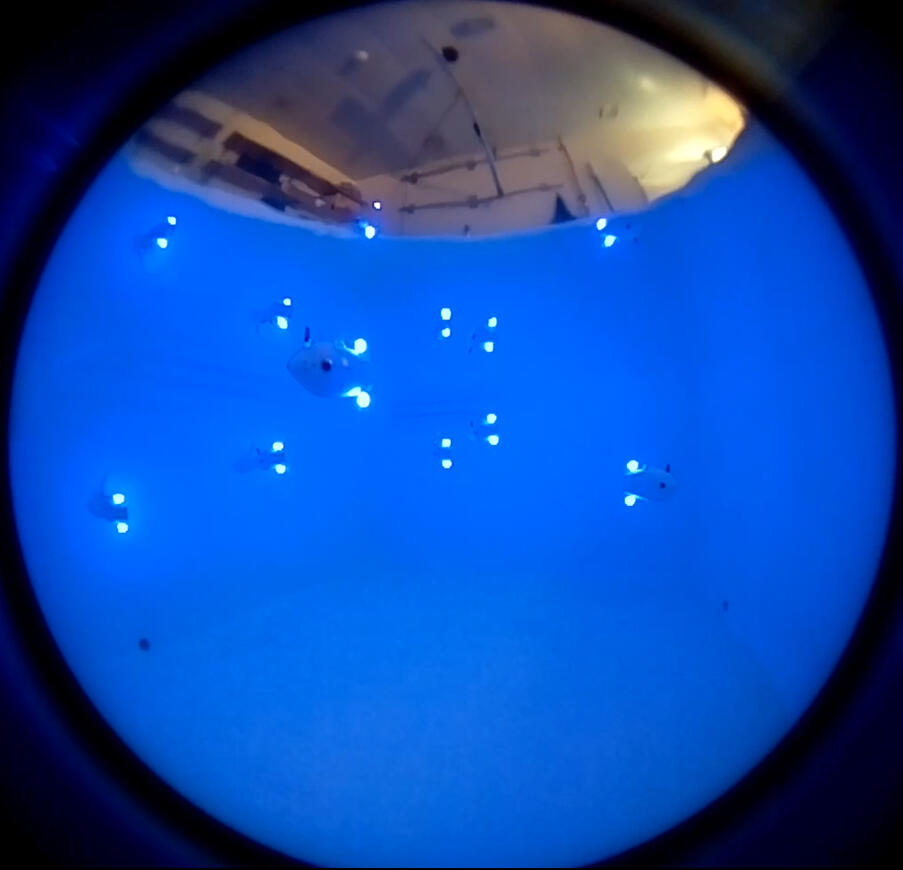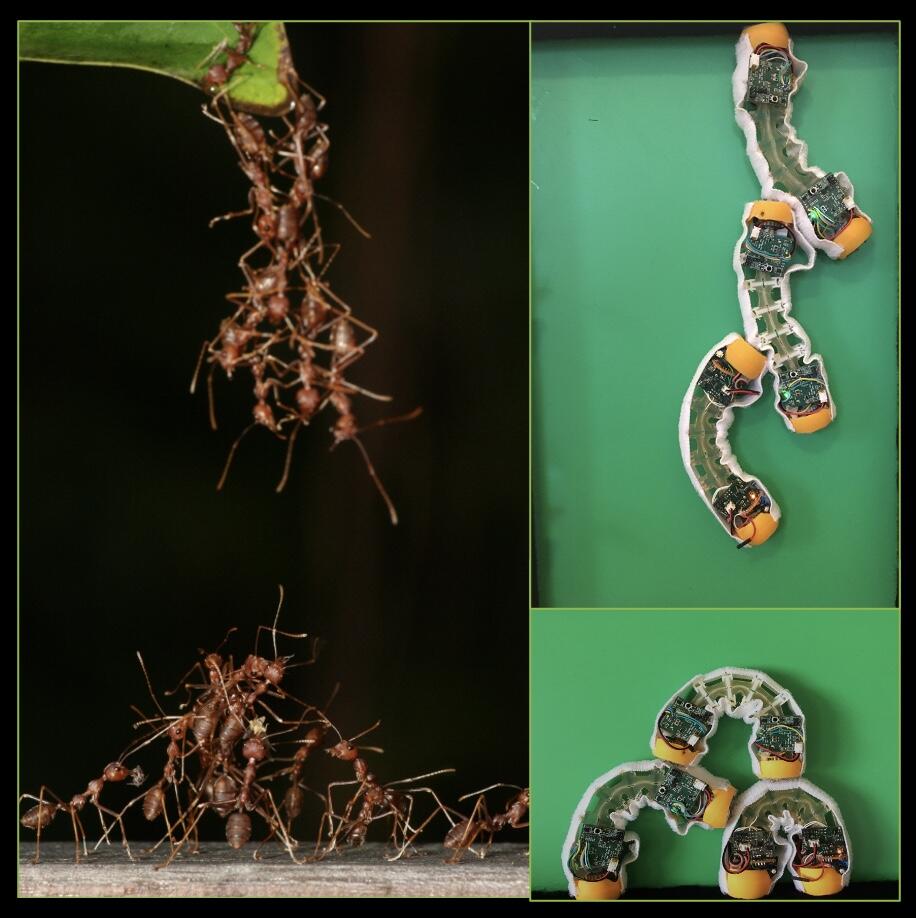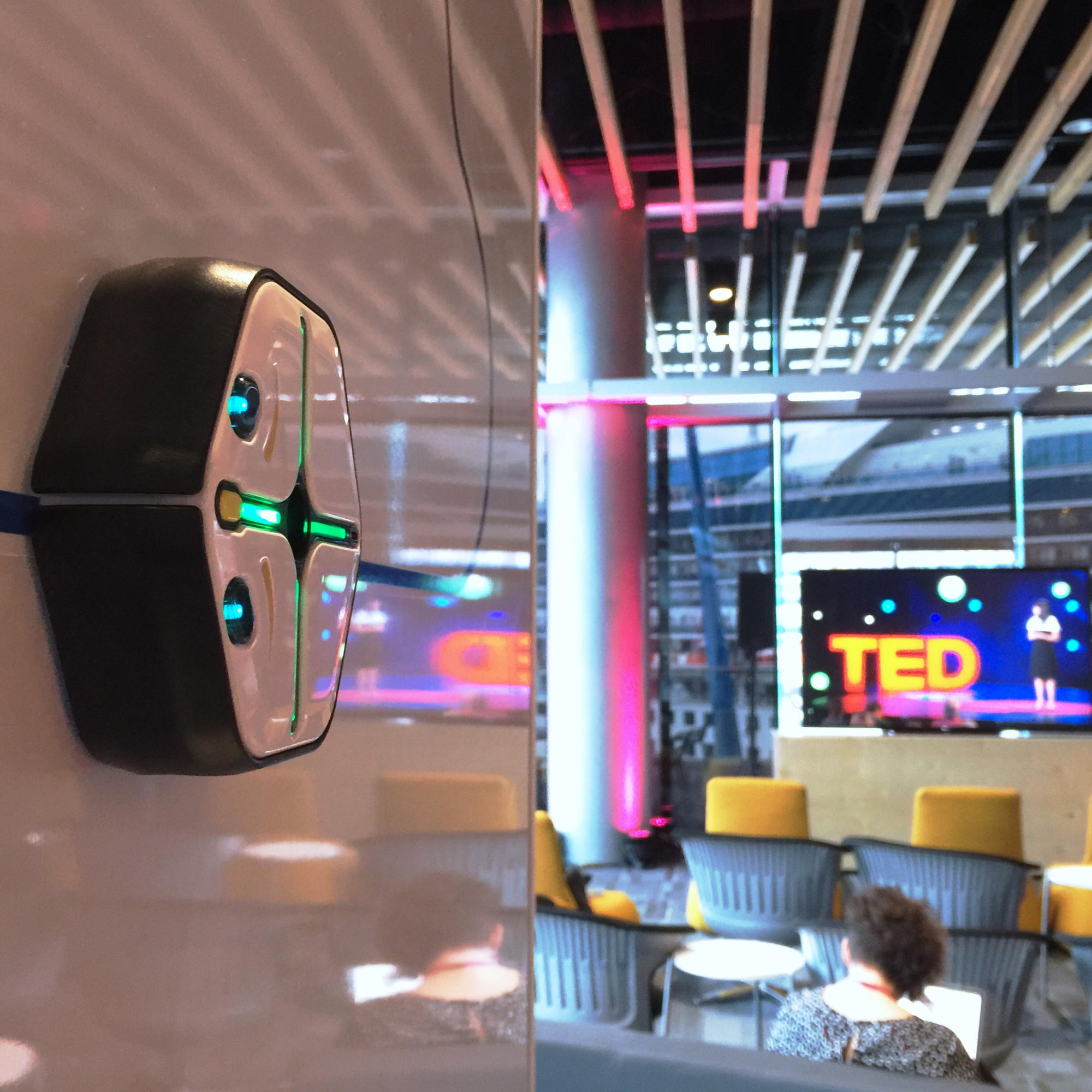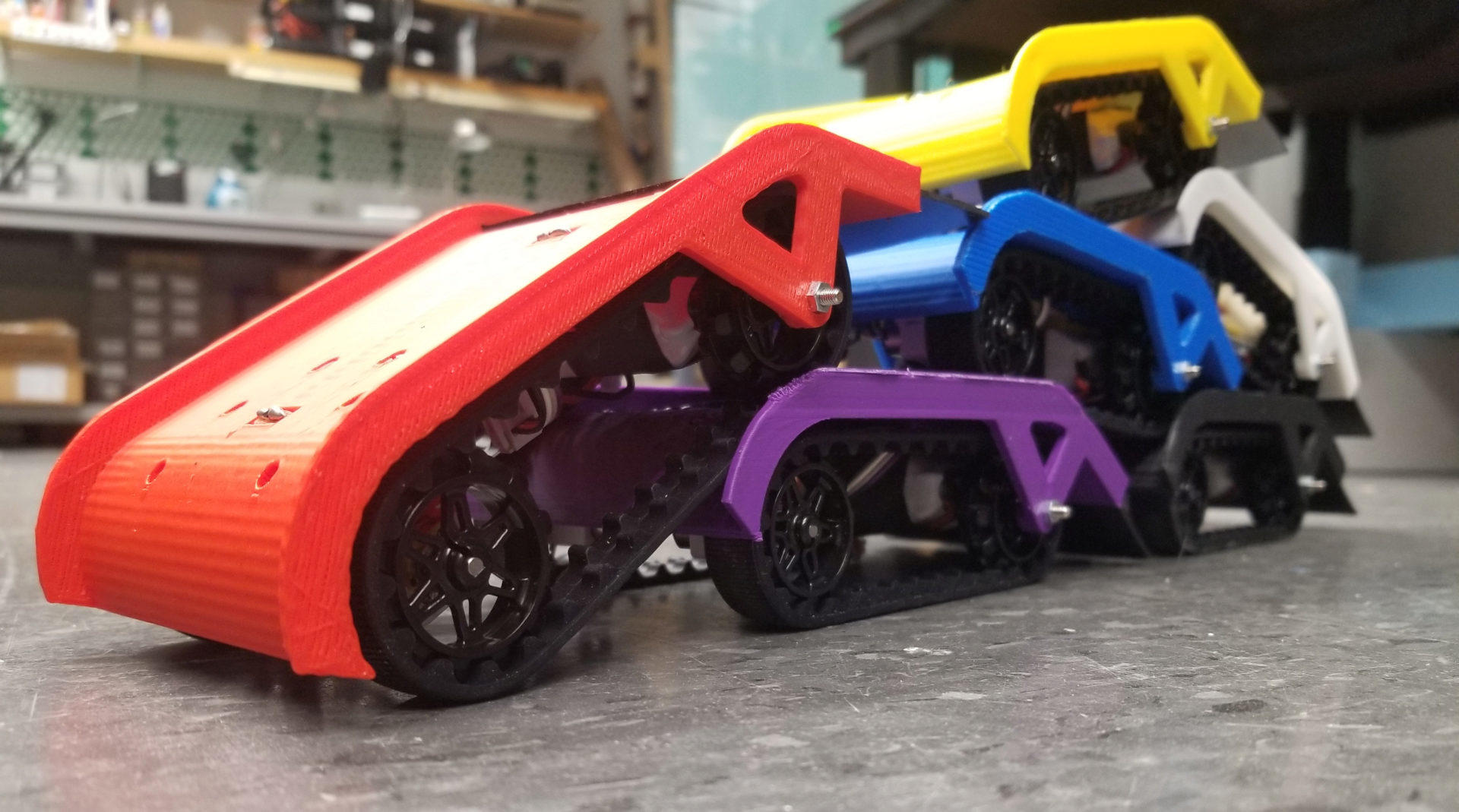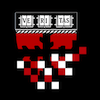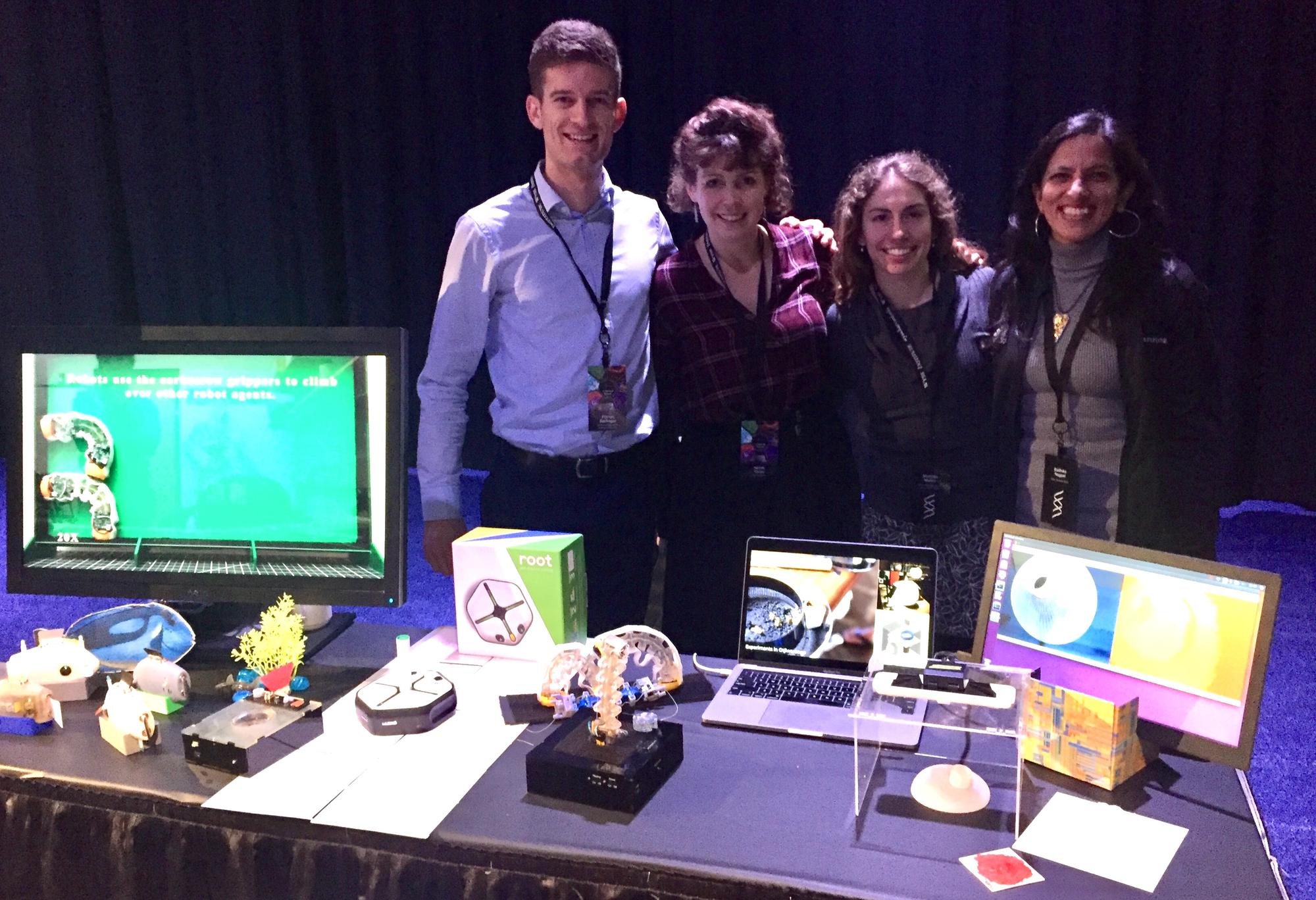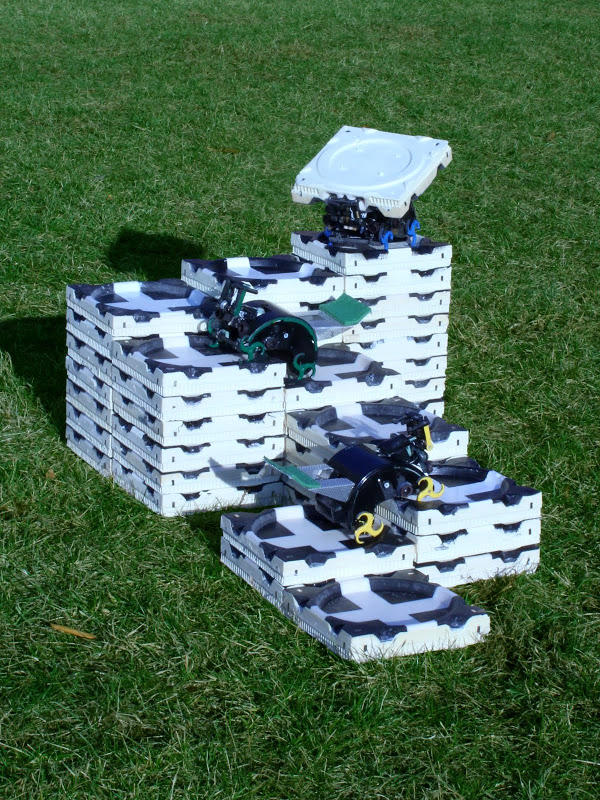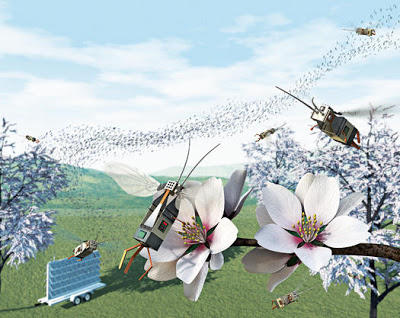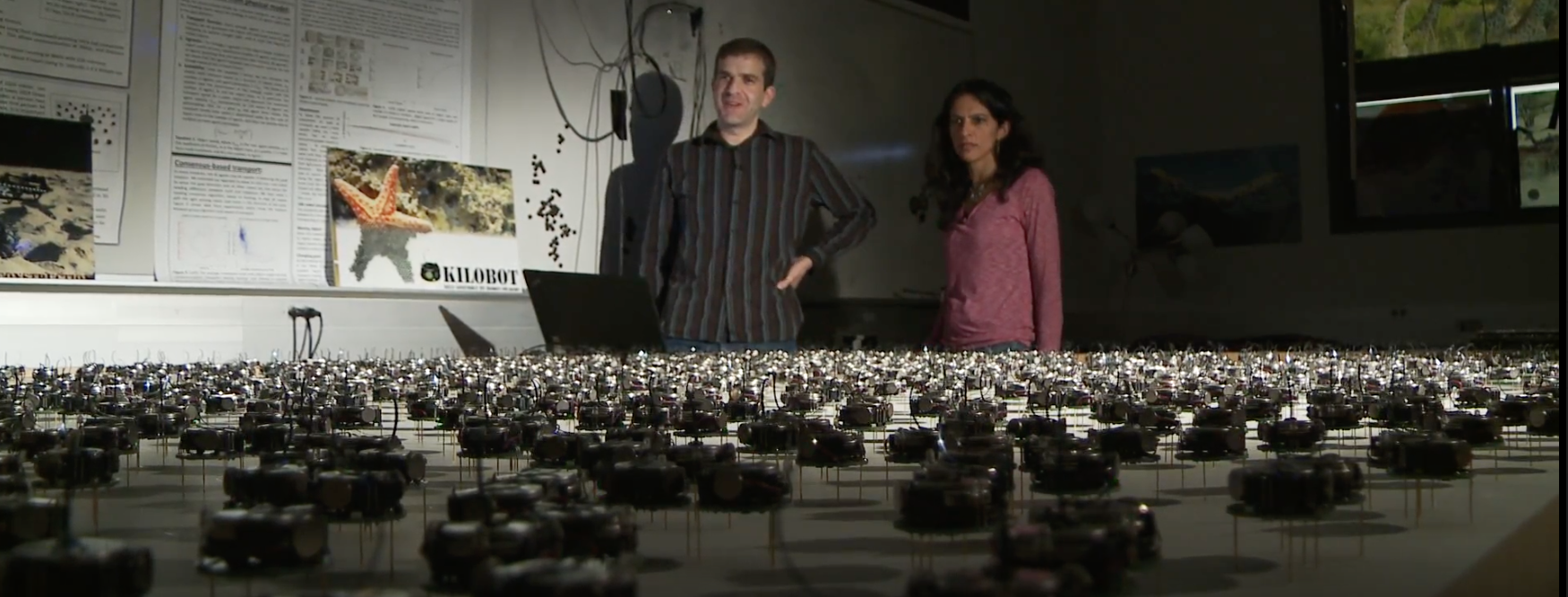 Our work on self-organizing multi-agent systems lies at the intersection of Computer Science/AI, Robotics, and Biology. The main theme in our lab is understanding and engineering collective behavior, but we do it in many ways -- both theory and hardware, and both bio-inspired and collaborations with biologists. You can read more about the broad themes and projects in our lab on this page, see movies and talks of our work on our youtube channel, or read selected articles on our publications page. To learn more about our lab, check out our press page.
Our work on self-organizing multi-agent systems lies at the intersection of Computer Science/AI, Robotics, and Biology. The main theme in our lab is understanding and engineering collective behavior, but we do it in many ways -- both theory and hardware, and both bio-inspired and collaborations with biologists. You can read more about the broad themes and projects in our lab on this page, see movies and talks of our work on our youtube channel, or read selected articles on our publications page. To learn more about our lab, check out our press page.
Favorite Quote: "Building 1,000 robots is hard", McLurkin said. "Getting 1,000 robots to work together reliably is, how they’d say it in Boston? 'Wicked hard'."
We work on three main areas:
-
Global-to-Local Theory
We explore artificial multi-agent models inspired by self-organising and self-repairing behavior in biology. We are especially interested in global-to-local compilation and decentralized coordination, i.e. how user-specified global goals can be translated into local agent interactions, and how one can reason about the correctness and complexity of algorithms based on local agent interactions. Our goal is to show how biological design principles (e.g. stigmergy, implicit coordination, self-assembly) can be formally captured, generalized to new tasks, and theoretically analyzed.
-
Bio-inspired Robot Collectives
We use bio-inspired approaches for building and programming novel robotic systems that rely on large numbers of relatively cheap and simple agents, especially robot swarms and self-assembly (e.g. BlueSwarm, Kilobots, Termes, Robobees). We are especially interested in the body-brain-colony design space and in embodied intelligence, i.e. how exploiting mechanical intelligence and collective intelligence together can enable novel autonomous robot collectives for new tasks (collective construction, 3D soft self-assembly, underwater exploration, etc).
-
Biological Collectives
We develop mathematical and experiment-driven models of individual behavior to investigate how system-level properties emerge in natural collective systems. We work closely with experimental biologists, and conduct field studies. Our previous work focused on epithelial tissues in fruit fly development, relating local cell programs to global tissue-level outcomes. Our current work focuses on social insects (mound-building termites, collective-transport in ants, army ant self-assembly) that coordinate to achieve complex tasks. Our newest work is on beavers and fish schools.
collective intelligence, swarm intelligence, embodied intelligence,
self-organization, multi-agent systems, amorphous computing, global-to-local programming
bio-inspired robots, swarm robotics, self-assembling modular robots, mobile sensor networks
decentralized coordination, distributed algorithms, stigmergy, implicit communication
systems biology, social insects, animal groups, multicellular systems
